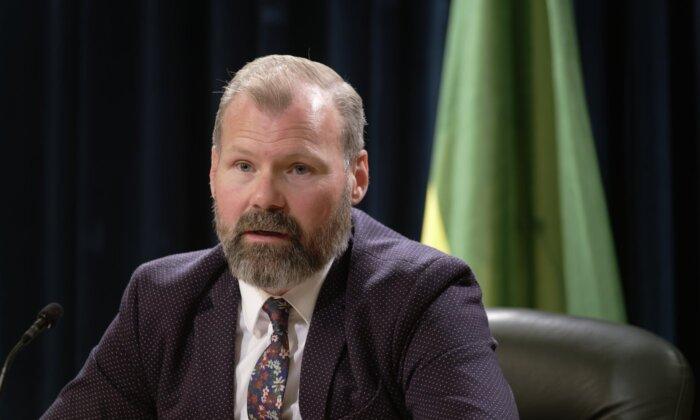Saskatchewan and Alberta will work together on nuclear power generation in a bid to obtain affordable and sustainable electricity grids by 2050, the provinces have announced.
The provincial governments signed a memorandum of understanding this week to keep each other informed about supply chains, workforce development, fuel supply, and regulation of nuclear reactor technologies such as small modular reactors.
The initiative was announced by Saskatchewan Crown Investments Corporation Minister Dustin Duncan and Alberta Affordability and Utilities Minister Nathan Neudorf at a joint press conference in Regina on May 2.
“Saskatchewan has a long-standing cooperative relationship with Alberta on energy development, and we share similar challenges and opportunities related to decarbonization,” added Mr. Duncan, the minister responsible for SaskPower.
Saskatchewan is exploring whether to build a small modular nuclear reactor in the next 10 years as it moves away from conventional coal-fired electricity.
Nuclear reactors don’t produce carbon dioxide and could provide Saskatchewan with reliable power should there not be enough wind and solar generation.
Alberta Utilities Minister Nathan Neudorf says nuclear energy is being explored to help his province become carbon neutral by 2050.
“Alberta is proud to partner with Saskatchewan on further exploring how we can ensure our power grids are affordable, reliable, and sustainable,” Mr. Neudorf said. “Our provinces are leading the world in responsible energy development, and we look forward to learning from Saskatchewan’s experience with nuclear generation.”
Saskatchewan, Ontario, and New Brunswick signed a similar agreement in 2019 to advance small modular reactors in Canada, with Alberta formally joining the pact in 2021.
The interprovincial strategic plan for the development of small modular reactors, developed by the four provinces, was released in March 2022.
Small Modular Reactors
Small modular reactors (SMRs) are much more compact than conventional nuclear reactors.The plan, according to Sask Power, is to fuel a transition to net-zero emissions over the next few decades.
“SMRs could fill a gap left by the retirement of our coal-fired power plants and use existing infrastructure to become a reliable baseload source of power,” the provincially-owned utility says. “That means they could backup wind and solar generation when those options aren’t available.”







